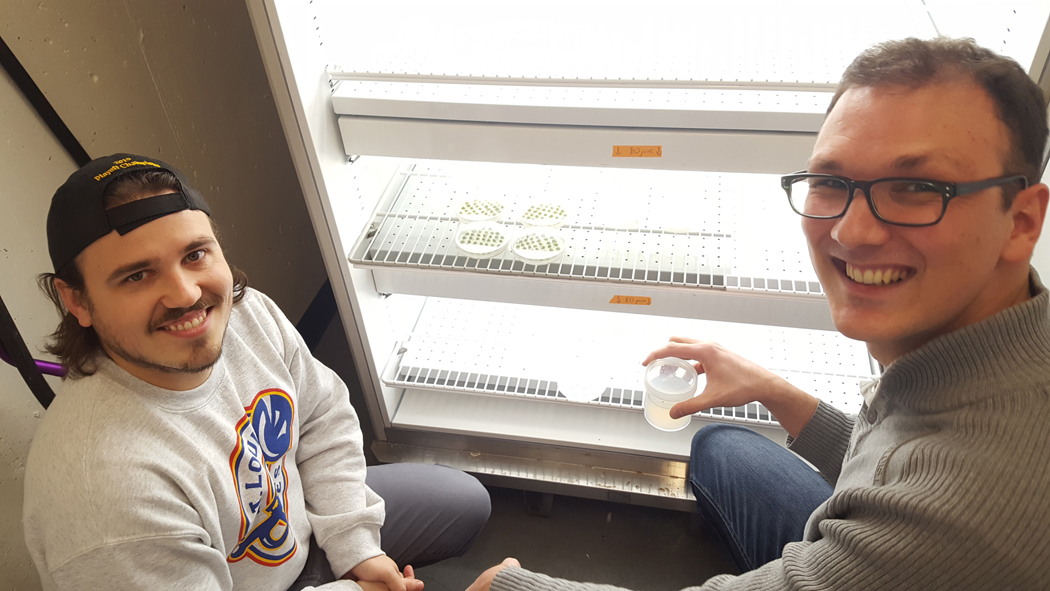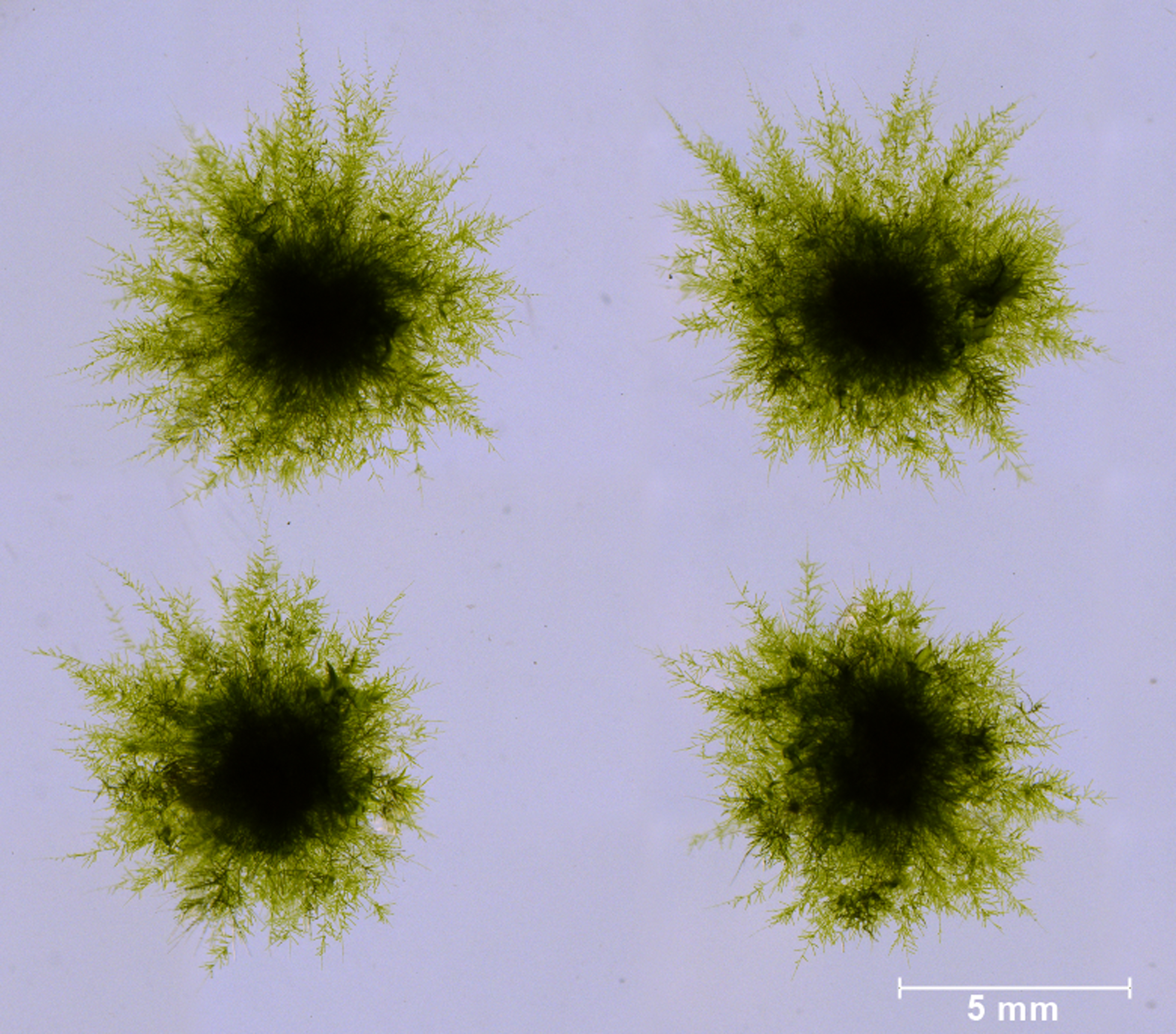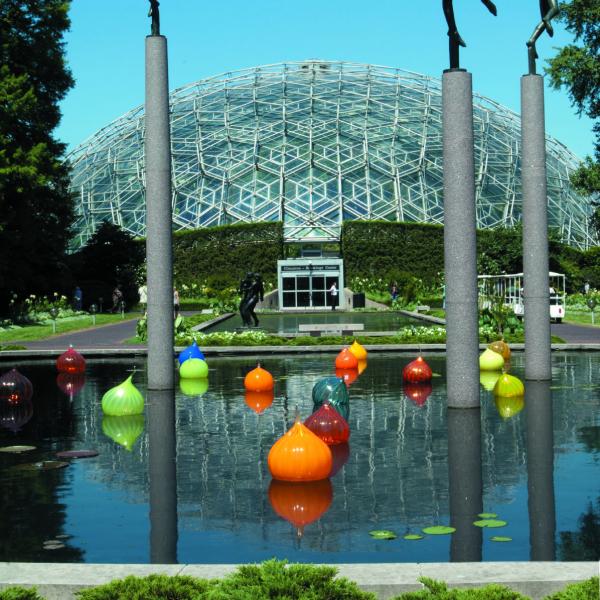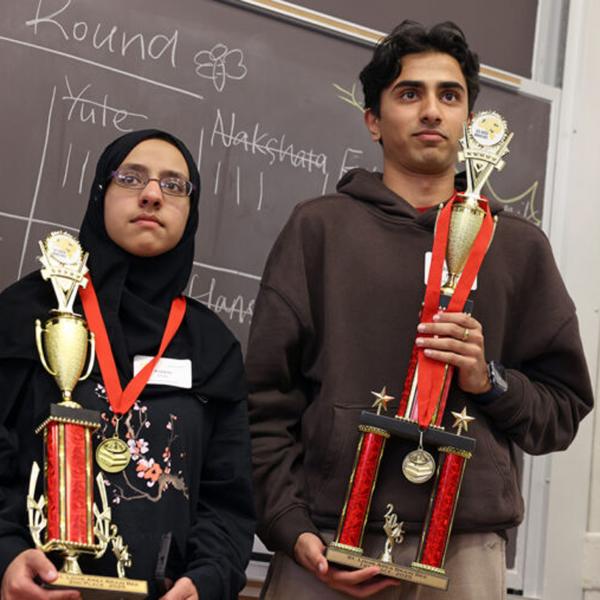

Elizabeth Haswell’s lab primarily works with the flowering plant Arabidopsis thaliana, but the lab’s research recently expanded to include moss, specifically Physcomitrella patens as a model organism. The primary reason they started using moss is because of its position on the evolutionary tree as a representative of one of the first lineages to conquer land 500-600 billion years ago. This allows them to ask questions about how traits and proteins they study have evolved and changed over time in land plants. Moss is also an efficient model organism for using CRISPR (Clustered Regularly Interspaced Short Palindromic Repeats) gene editing techniques.
Ralph Quatrano, Spencer T. Olin Professor Emeritus of Biology, used Physcomitrella patens as a model organism to study the basic mechanisms controlling plant cell and tissue morphogenesis, and the gene regulatory networks that control desiccation tolerance in seeds. He was a pioneer in this small, but growing, field of research and members of the Haswell Lab are proud to continue the tradition of moss research at Wash U.
Haswell Lab has been collaborating with Magdalena Bezanilla, a former postdoc in the Quatrano Lab, who now has her own lab at Dartmouth. Postdoc Ivan Radin went to the Bezanilla Lab for a two-week internship in 2017 to learn how to grow moss cultures and genetically modify them. They can literally be ground up and they still recover! Ivan learned many helpful tricks through hands-on experience and obtained some original lines of moss strains from her as well.
Moss is a beautiful system for studying cell biology and has multiple genetic advantages for asking complicated questions. It can be manipulated more easily than Arabidopsis. It grows faster and takes less time to obtain results. The moss’s dominant life stage is haploid, having only one copy of each chromosome, which means one has the ability to knock a gene out and look at the effect in the next generation, unlike Arabidopsis which can take multiple generations to see results. Moss is simple to grow in sterile cultures on petri plates just like bacteria, using growth chambers where conditions can be controlled easily since the specimens are not planted in soil. Plant-soil interactions introduce many other factors making it more complex to study. Moss’s simple body architecture makes it a great model for studying individual cells and their structures as they can be easily imaged with various microscopy techniques. Most of the organism is only one cell layer thick!
The long-term goal of basic research in the Haswell lab is to reveal the molecular mechanisms that underlie the perception and transduction of mechanical signals in plants. The lab’s main focus is how plants perceive mechanical forces on the cellular level, including touch, gravity, and internal changes like swelling or shrinking. Mechanosensitive ion channels allow cells to perceive the force and react to it. Ivan Radin’s arrival to the lab a few years ago led the research to venture out into a new family of proteins called “Piezo channels”, which were discovered in mammals about 10 years ago. These proteins are extremely important for functions such as touch, pain, perception, blood flow, lung function, kidney function, joint function, brain development, and other physical processes. This new research seeks to compare how the same protein acts in different cell types and how the cells adapt in different environments.
Haswell Lab is discovering that there are really big differences between how this channel functions in plants vs animals, and the main difference is that it’s in a different part of the cell, or has a different localization. There is already insight into how the same protein can accomplish the same thing but the mechanism by which it’s functioning has adapted and changed along with the mechanics of plant cells. Haswell Lab members realized that the moss model is amazingly practical for the biological questions they are asking. They are starting new projects that will expand their use of moss. Research technician Ryan Richardson is working on involving Wash U undergrads in research on genetic modifications, by knocking out the larger class of these mechanosensitive ion channels in moss, using CRISPR. The lab has a workflow plan where undergrads can jump in at any point in gene editing. They are envisioning a high throughput undergraduate-based analysis of a class of genes that they care about in moss. Although this project could be done with Arabidopsis, moss as a model organism is so much faster and more efficient.
As one of the earliest promoters of moss as a model system, Ralph Quatrano is thrilled to see the tradition of moss research continuing at Wash U. He is internationally known for his plant science research, and widely recognized for his significant and continued contributions to the life sciences (>180 publications). He continues to serve on several boards and consults for start-ups, major agricultural companies, and research institutions. Along with his research and teaching at Wash U, he has served on the faculties at Oregon State University and the University of North Carolina in Chapel Hill. “I remember when I first met Liz during her interview with the biology department. She presented a very unique research problem, mechanosensing in plant cells. I thought her approach was refreshing, unique and forward-thinking. I value her contribution to this research but also her commitment to the department and the many services she’s contributed.” -Ralph Quatrano
To learn more about the Haswell Lab’s research, visit: https://www.haswelllab.org/. To learn more about the Quatrano Lab’s research, visit: https://sites.wustl.edu/ralphquatrano/.




